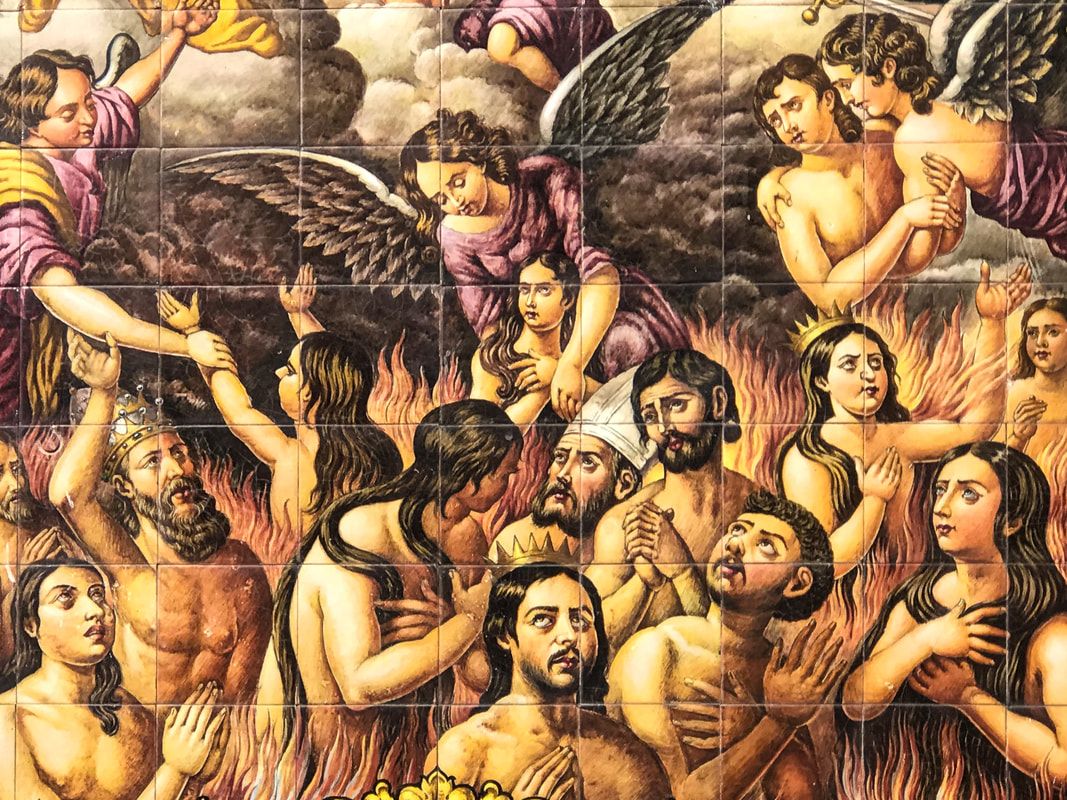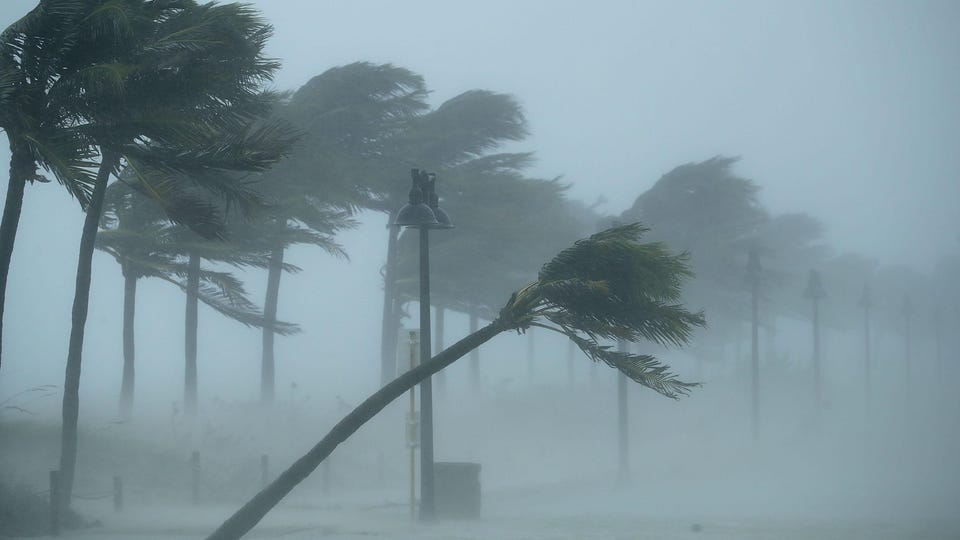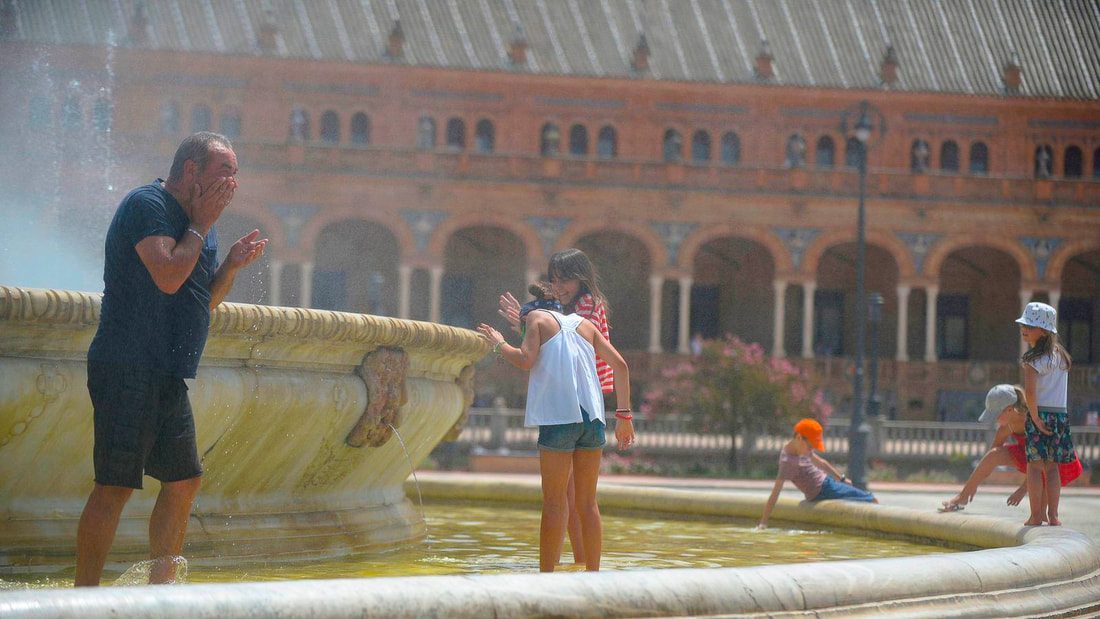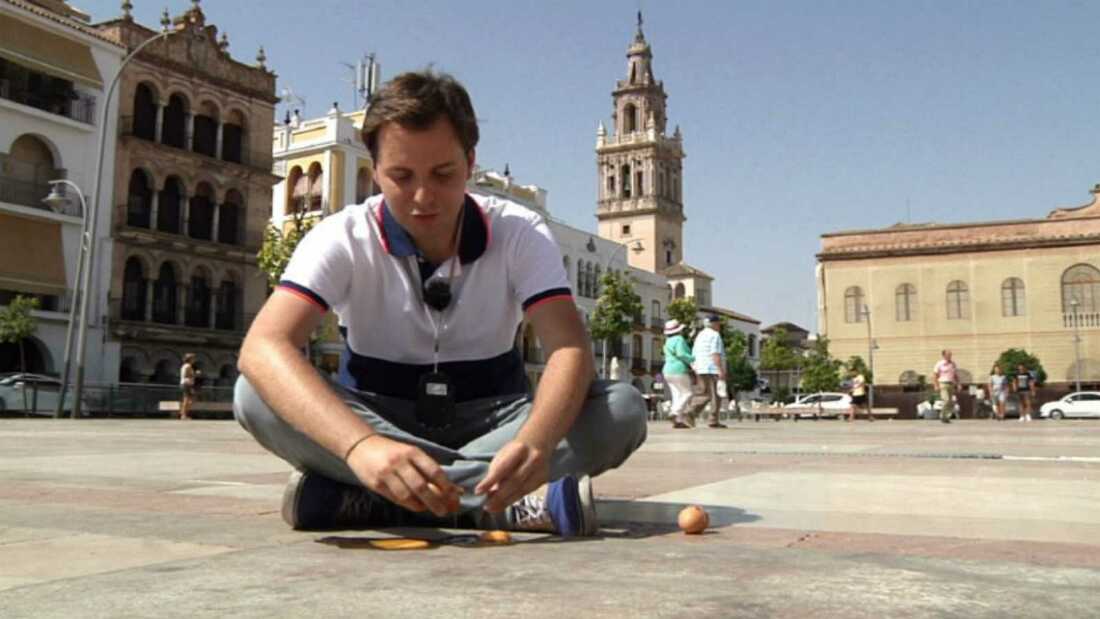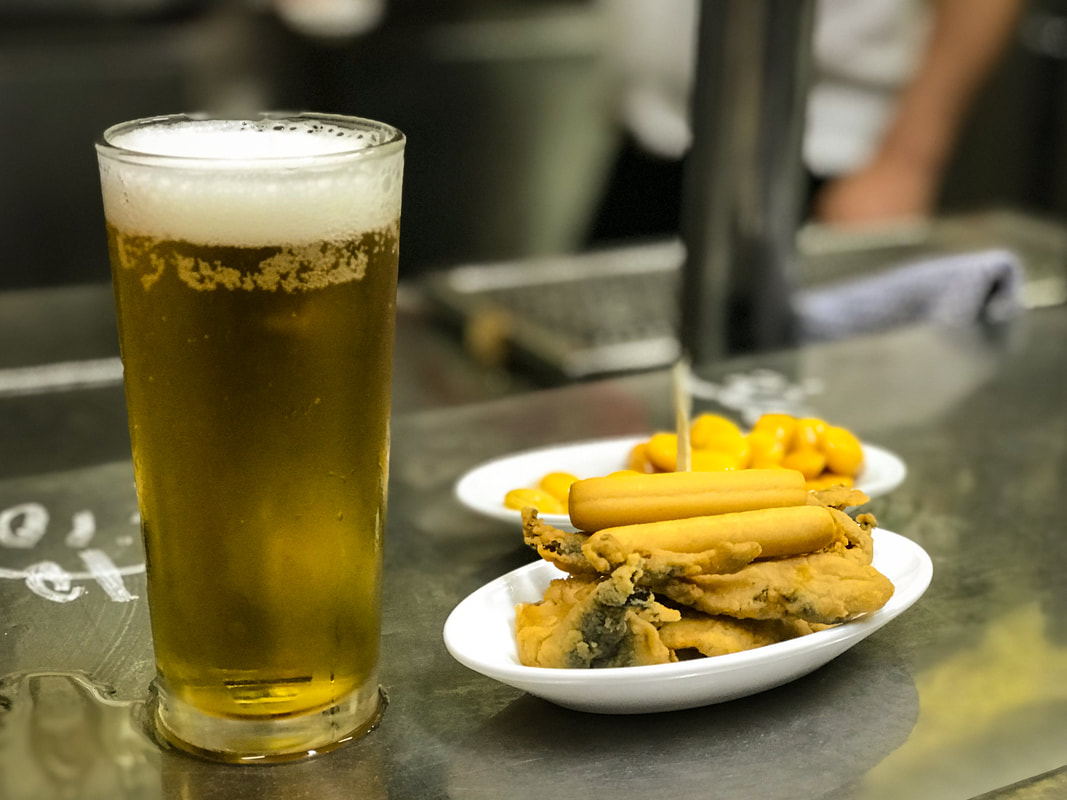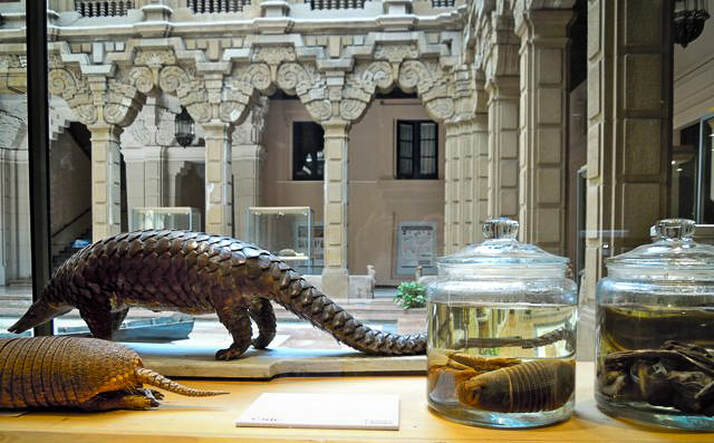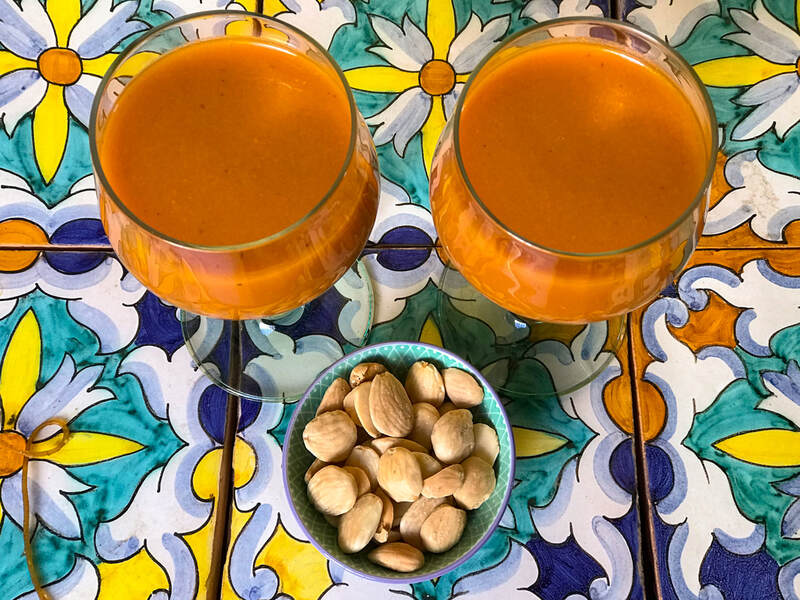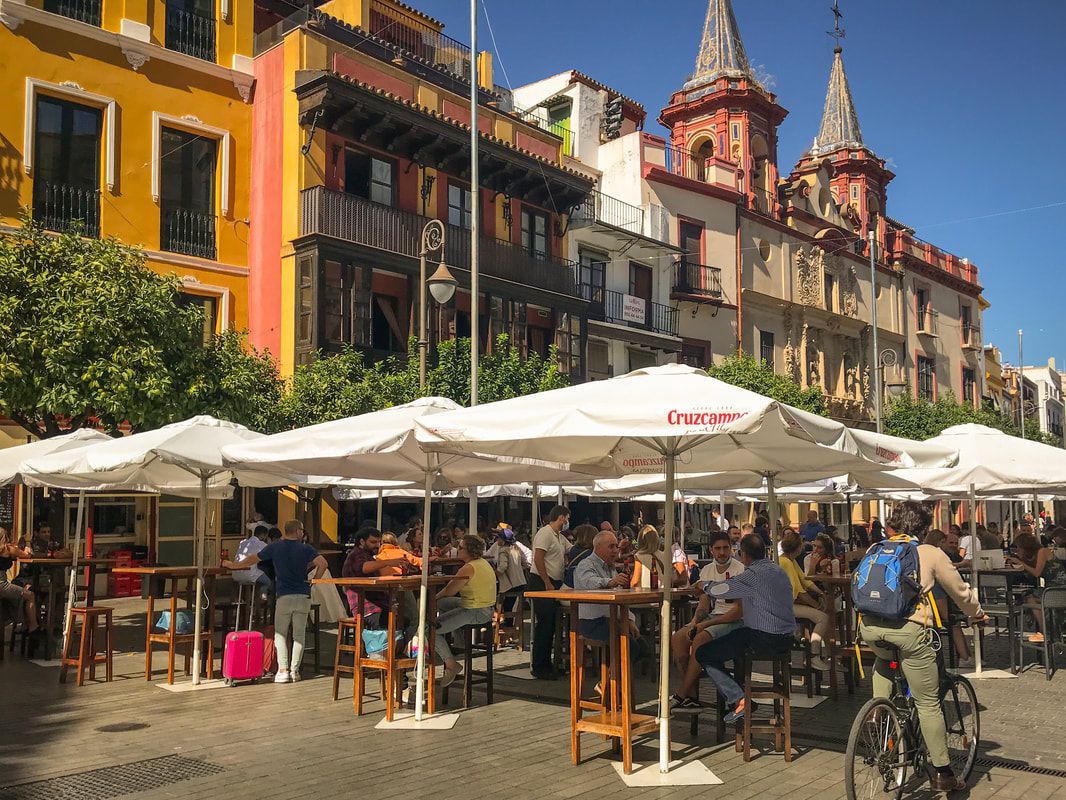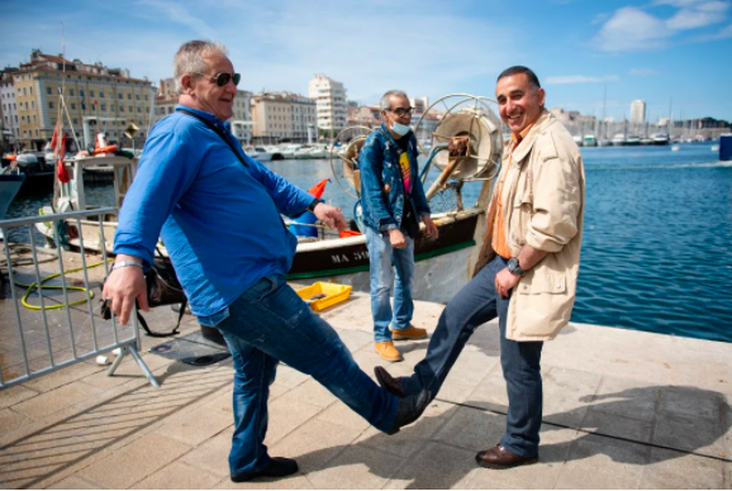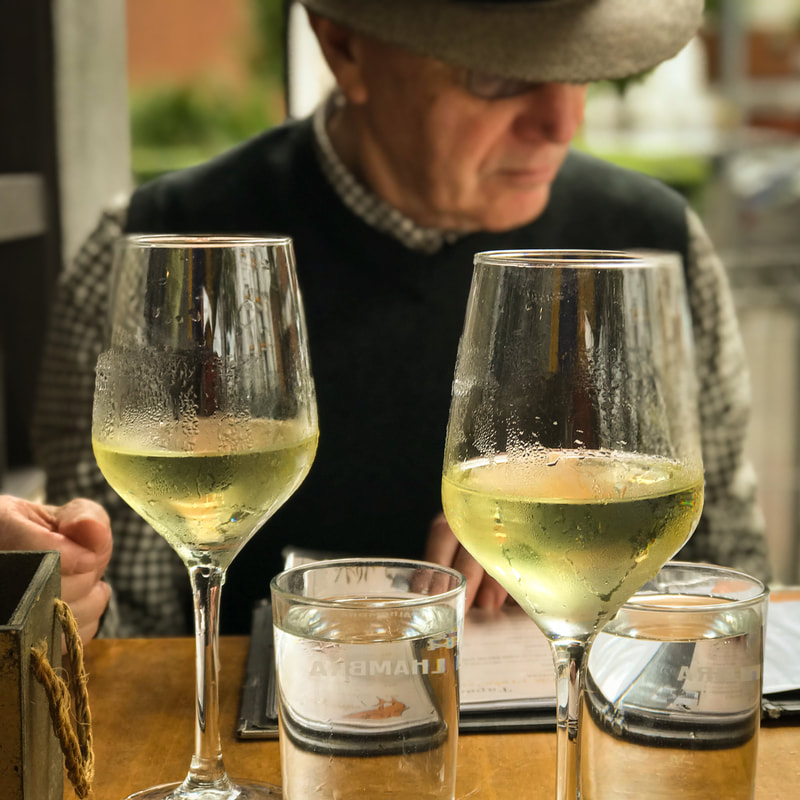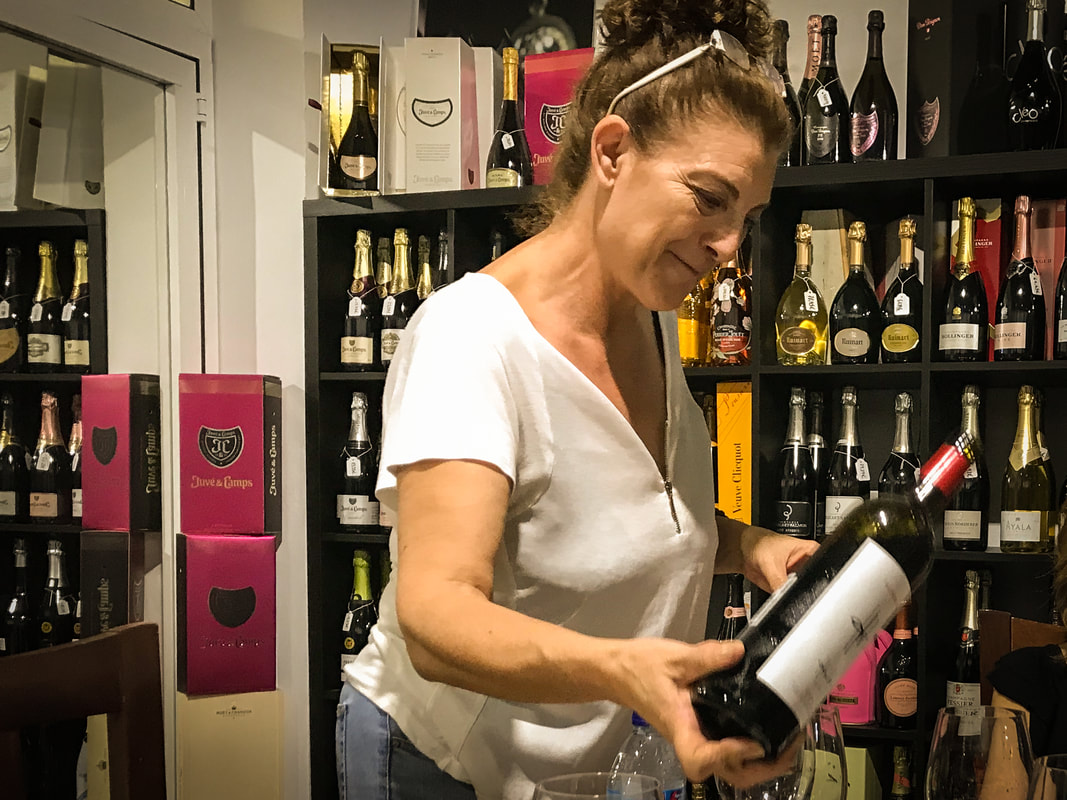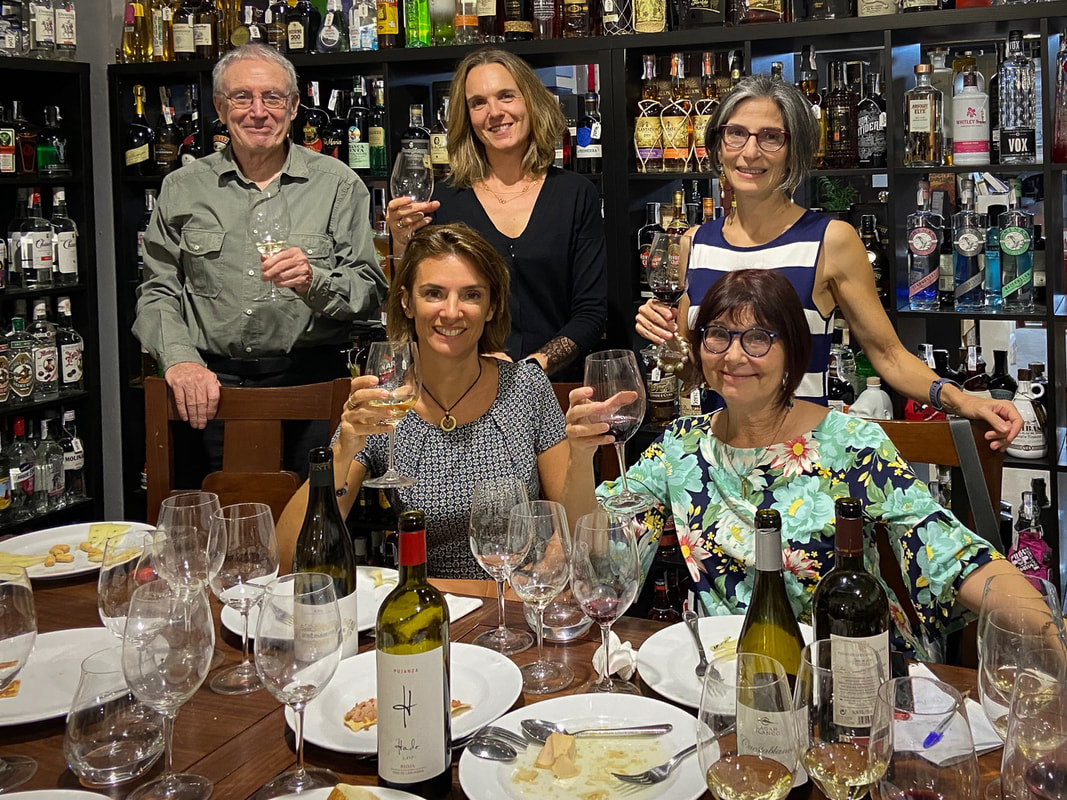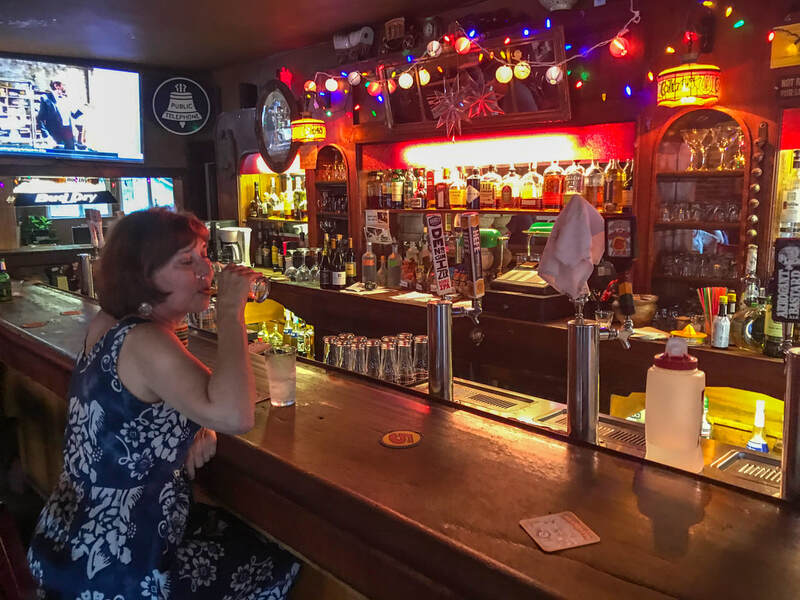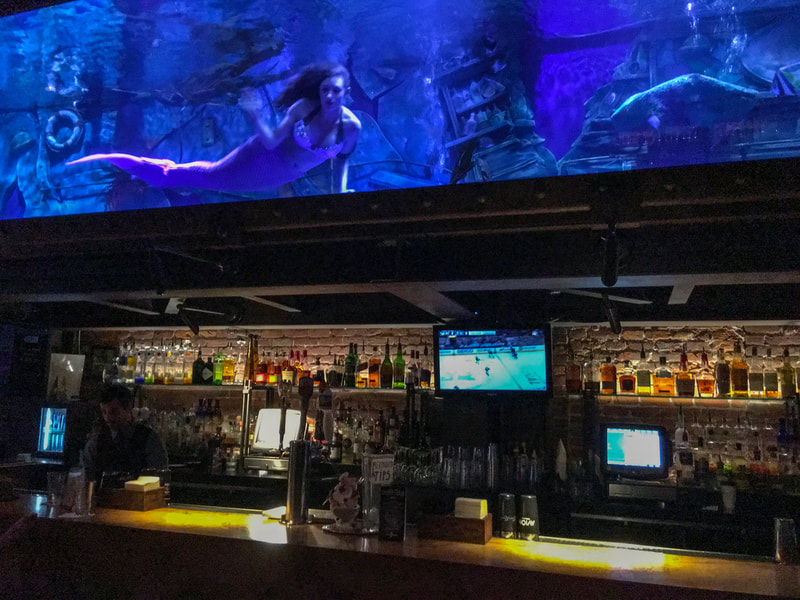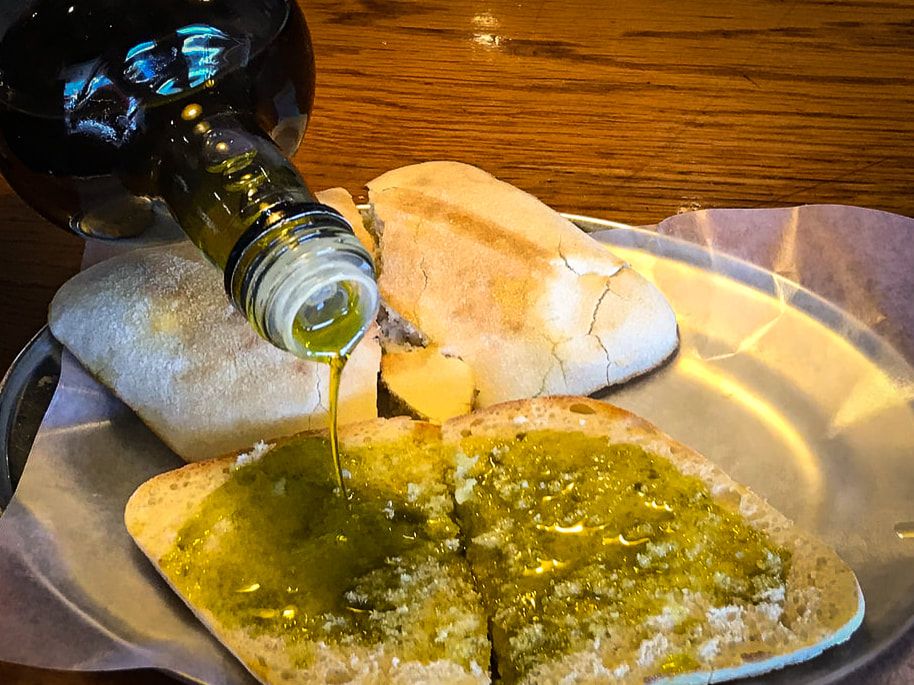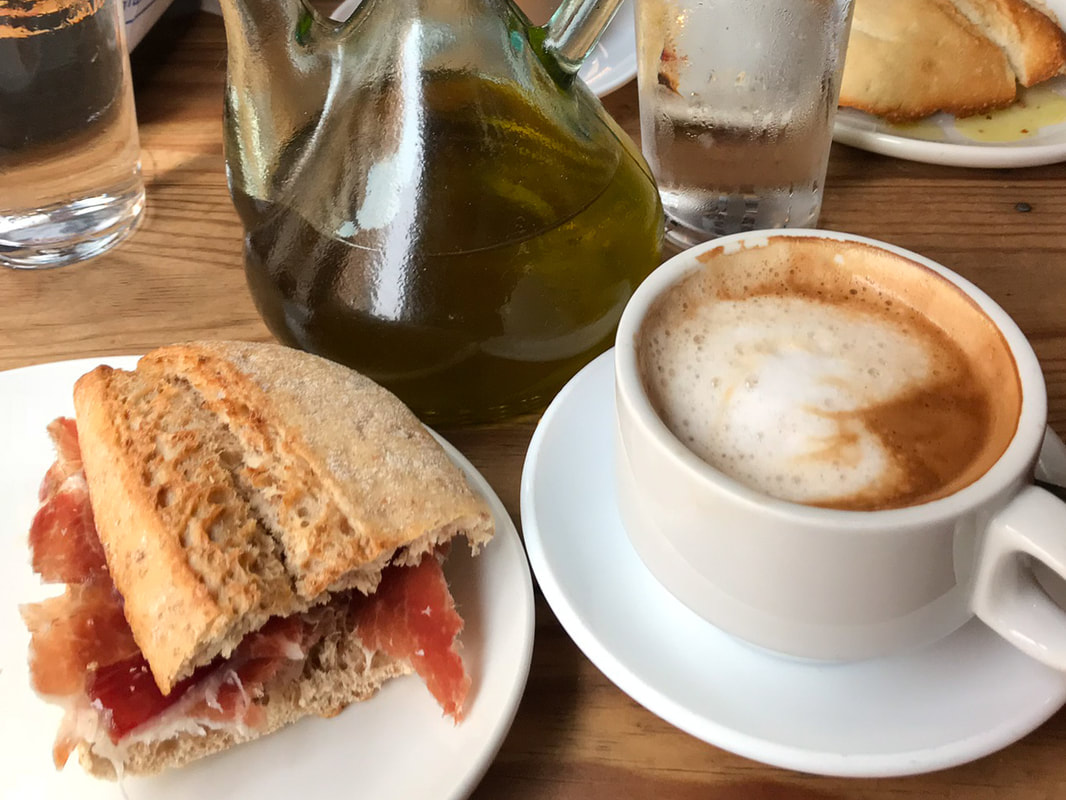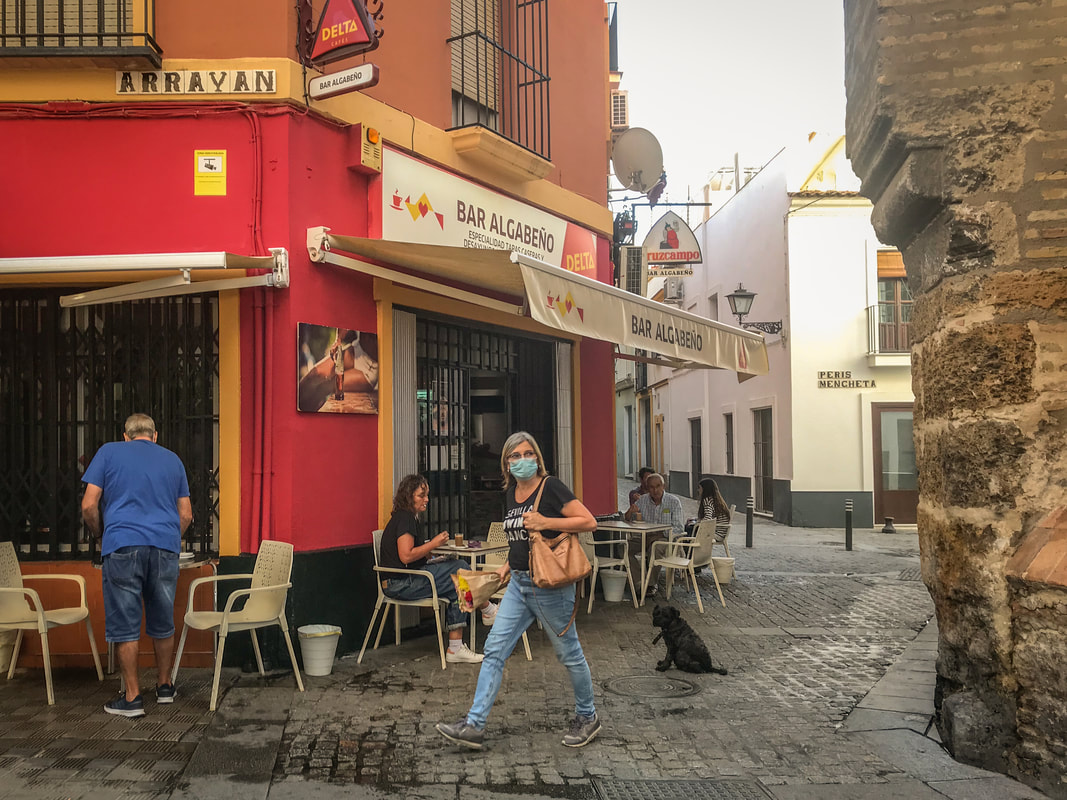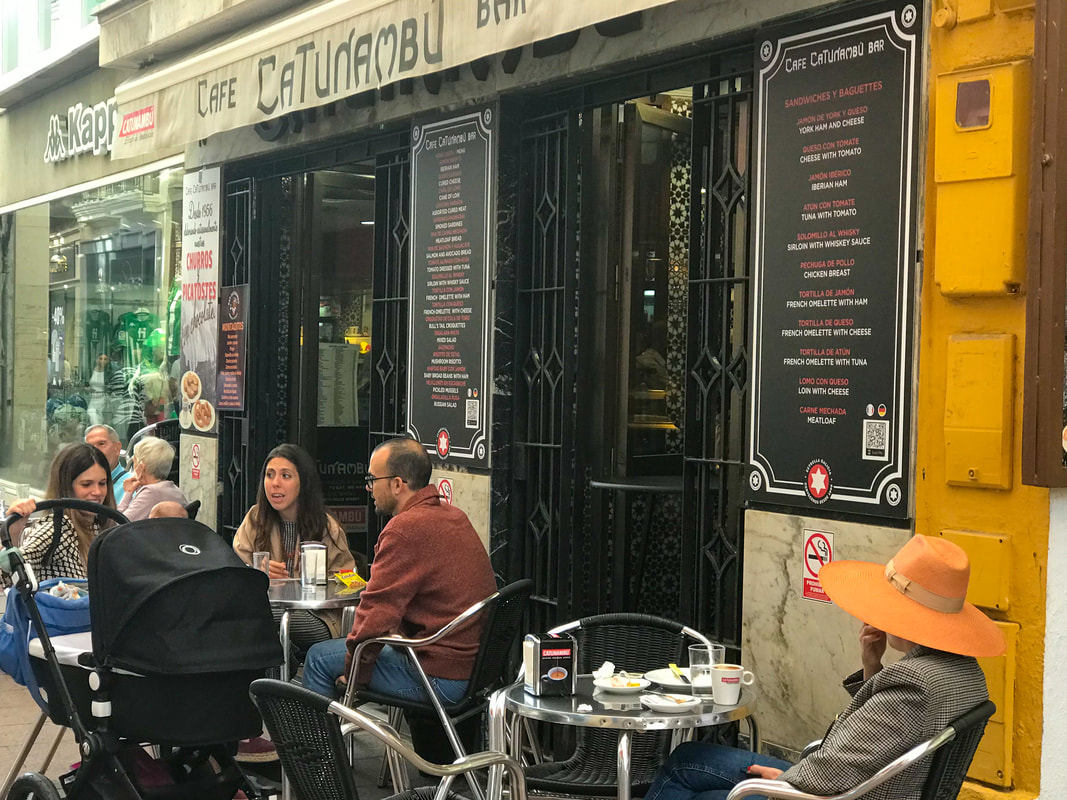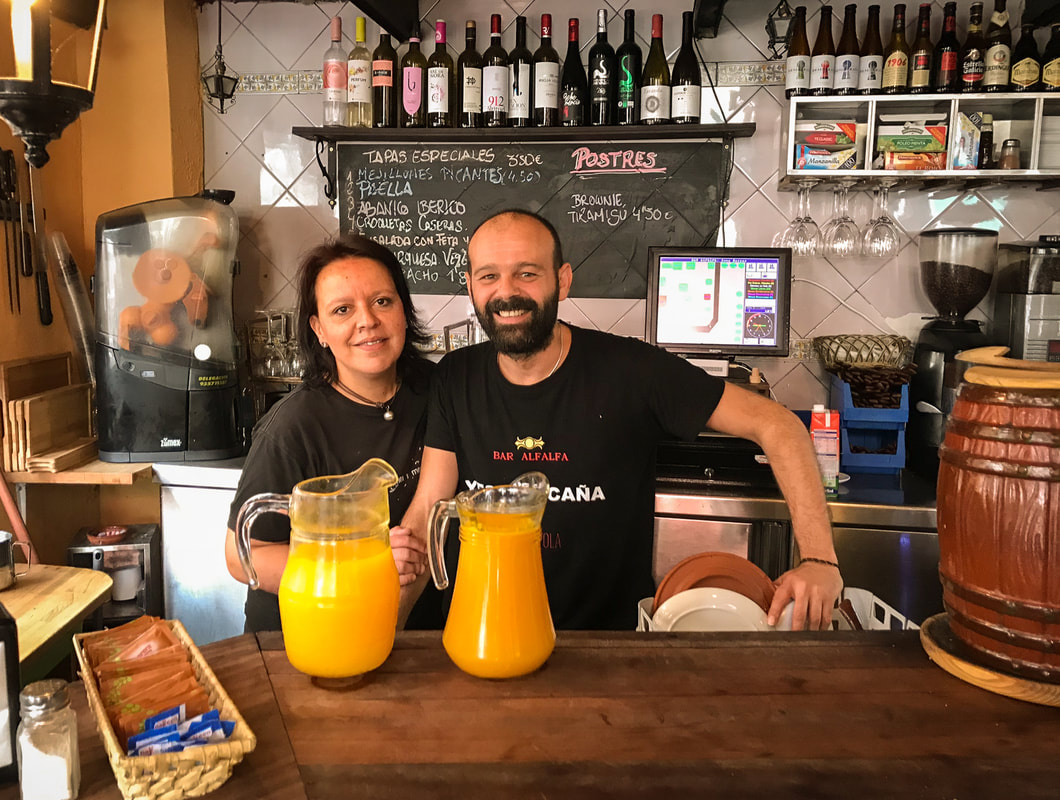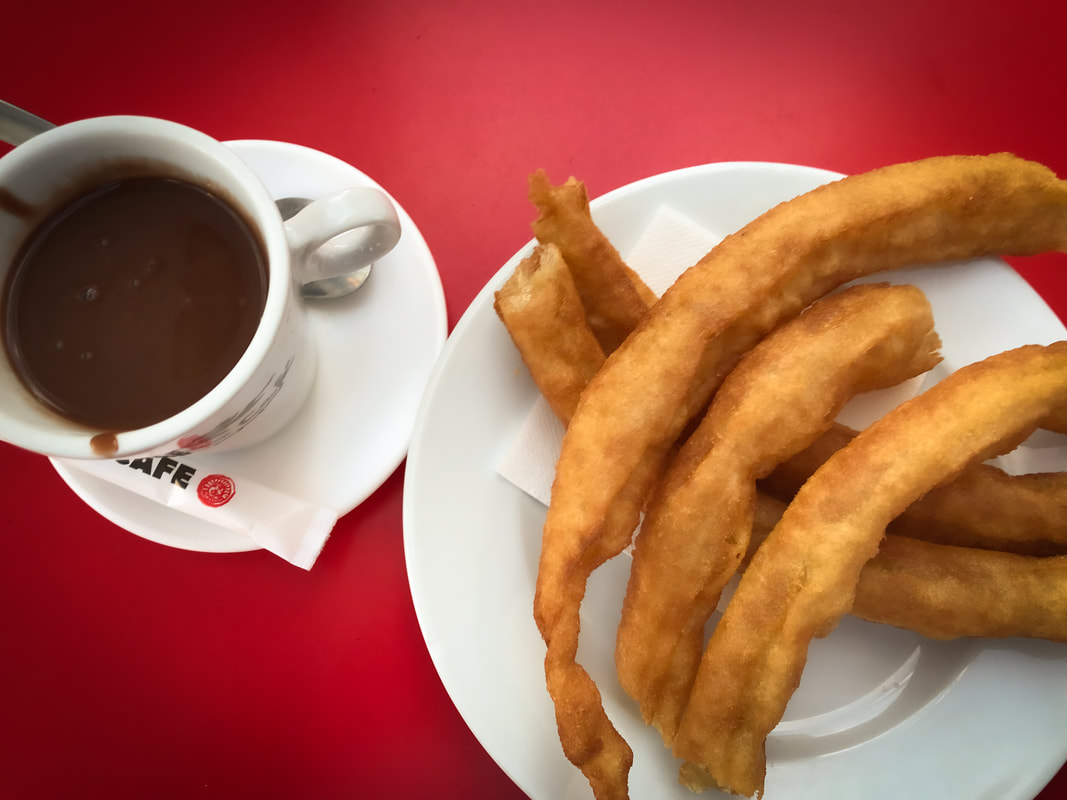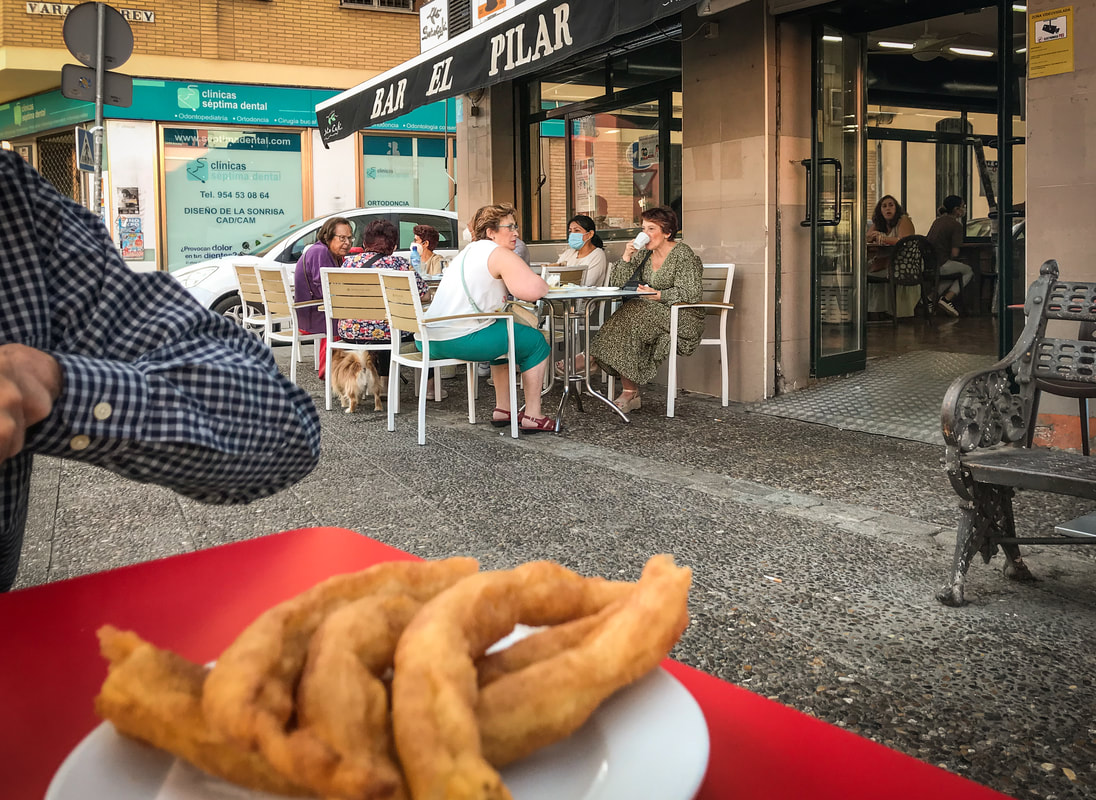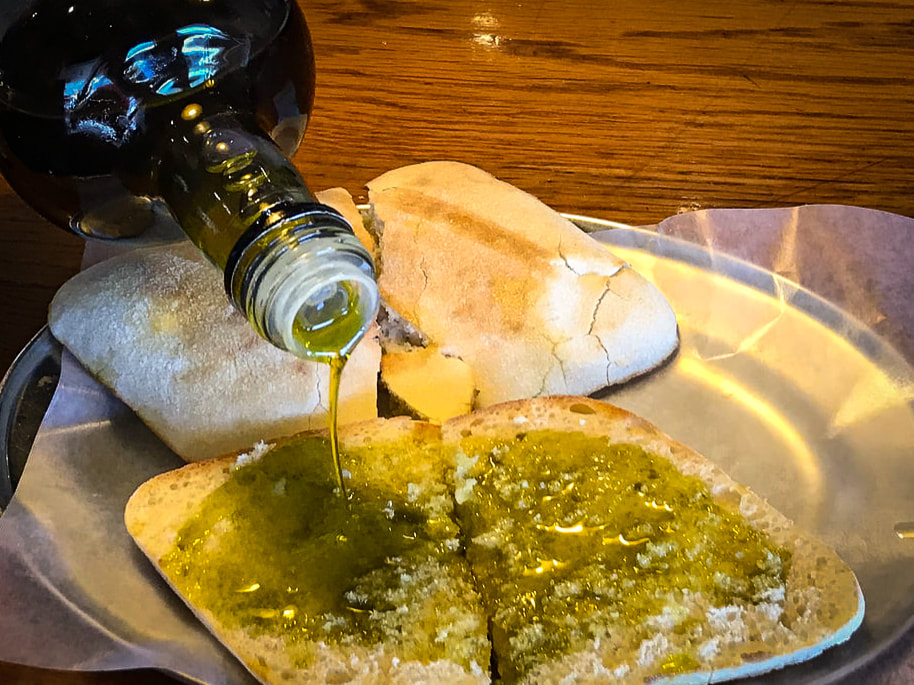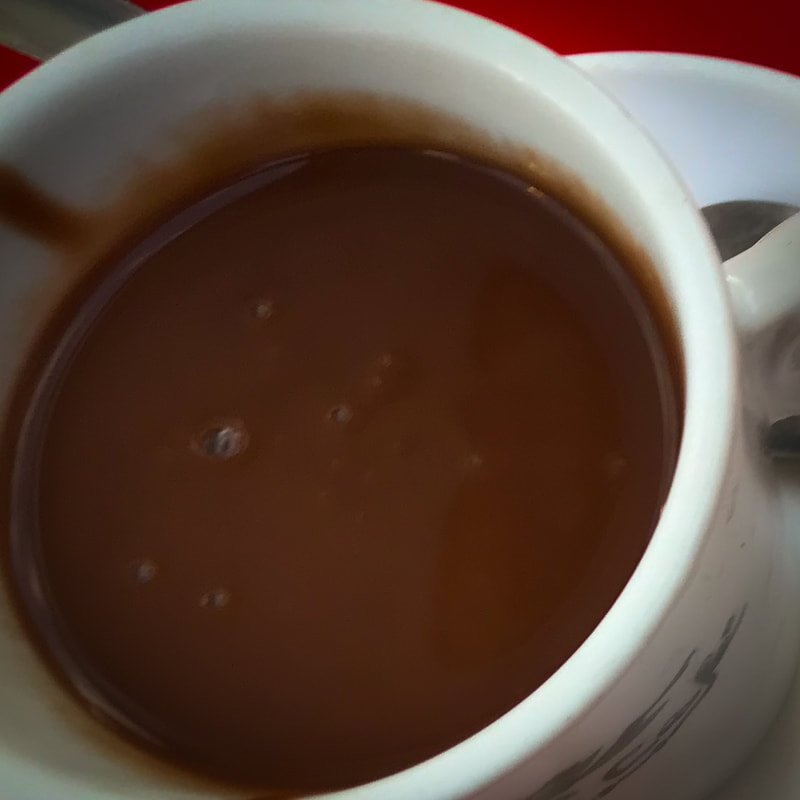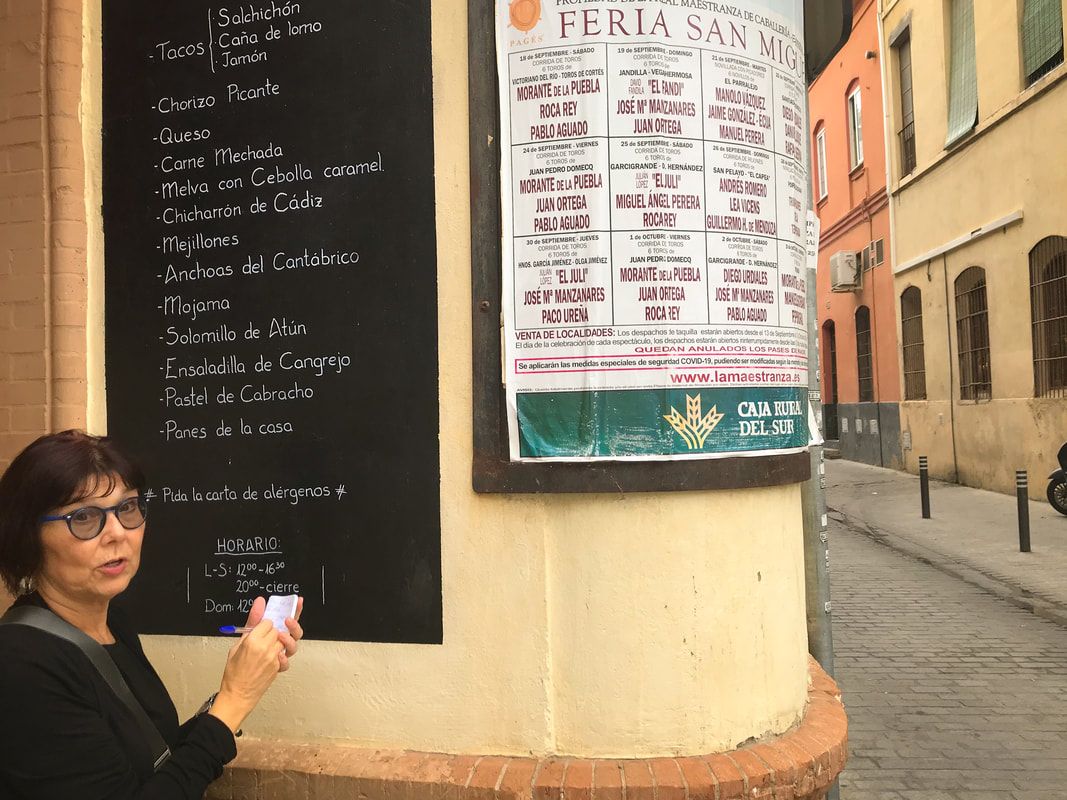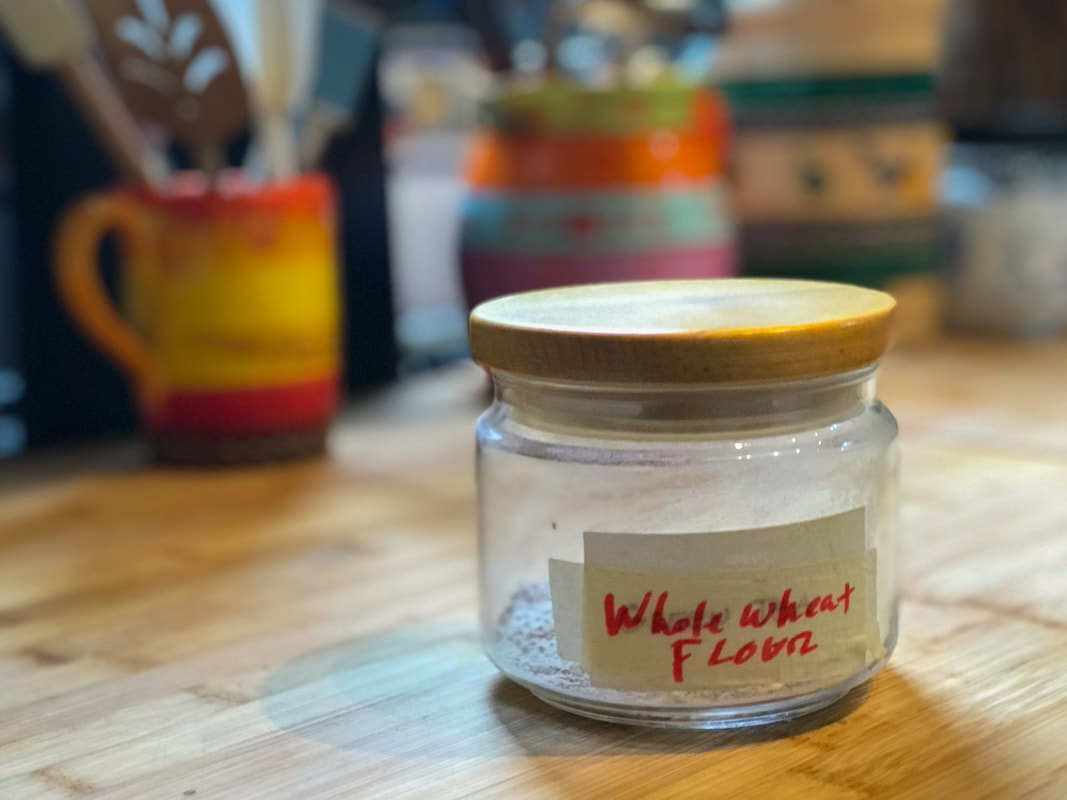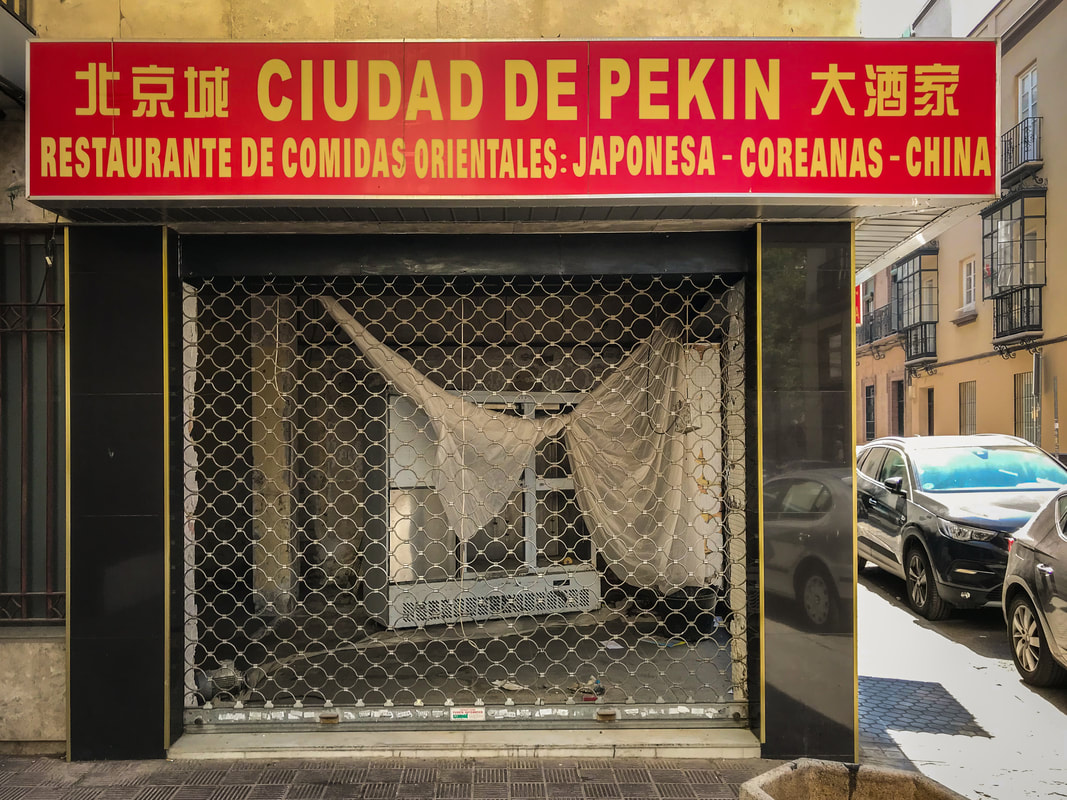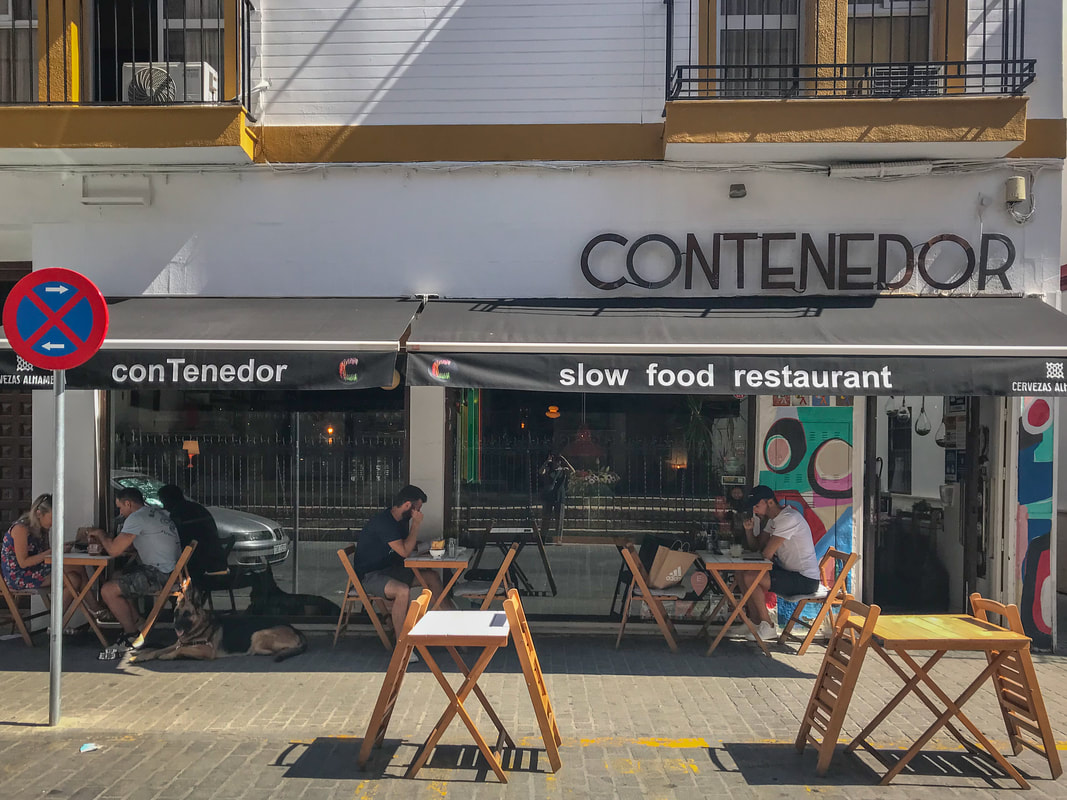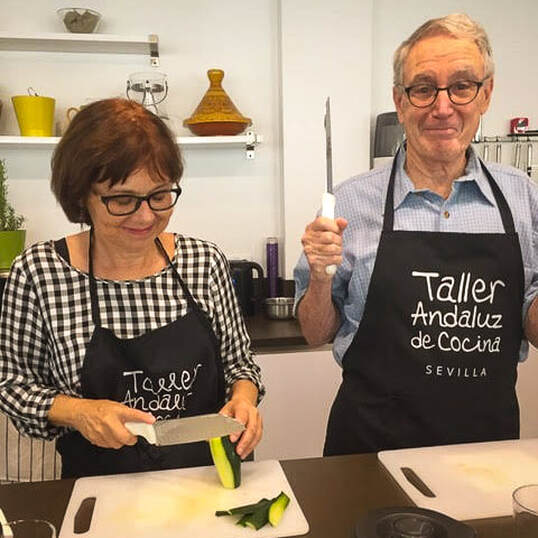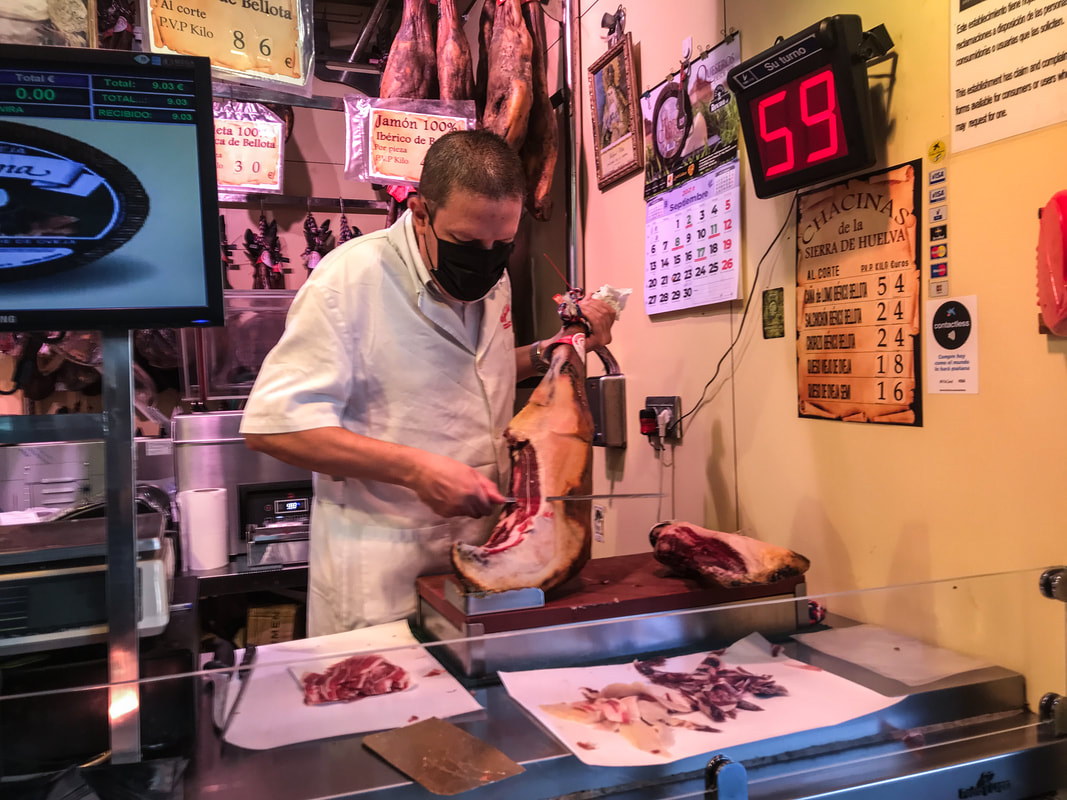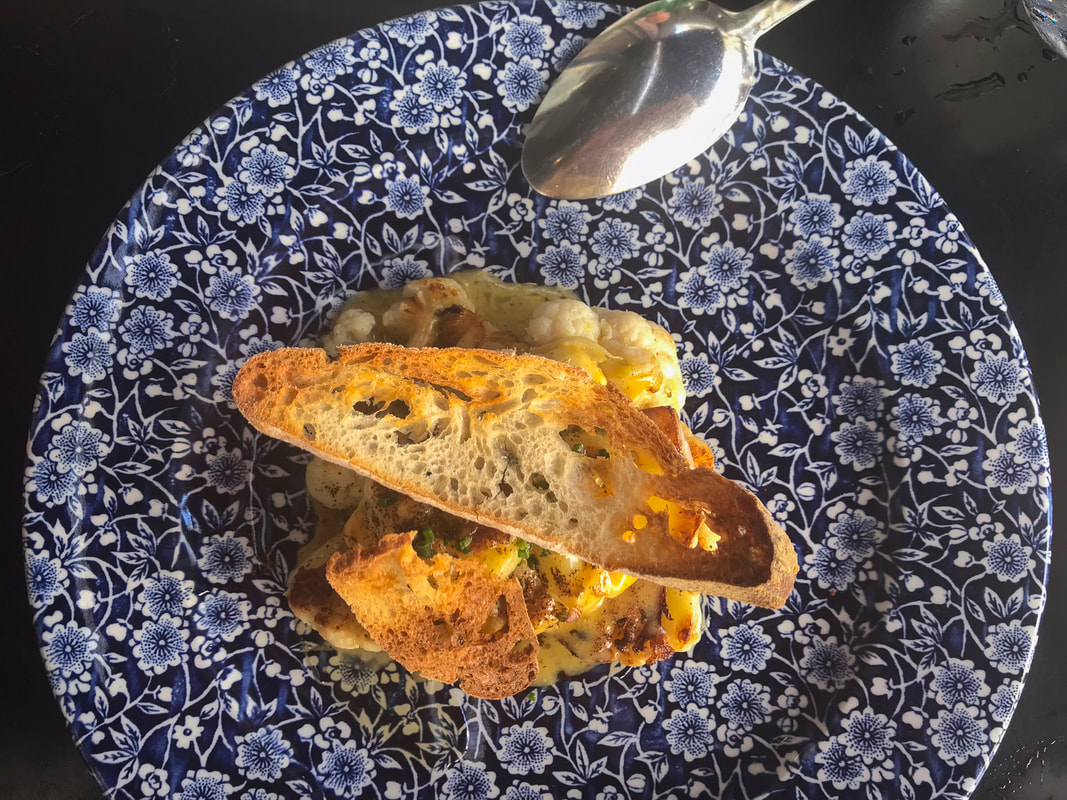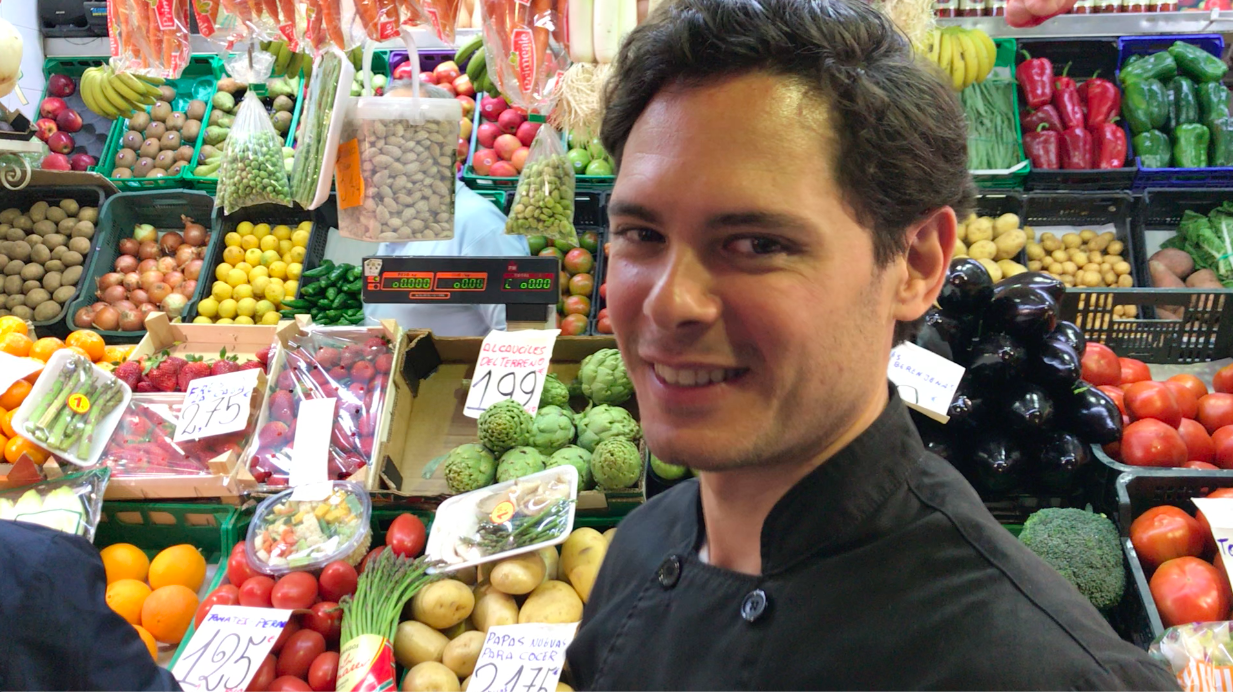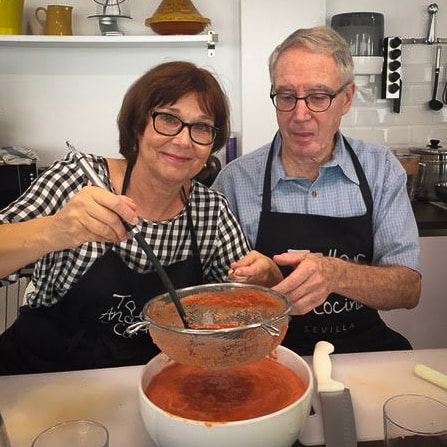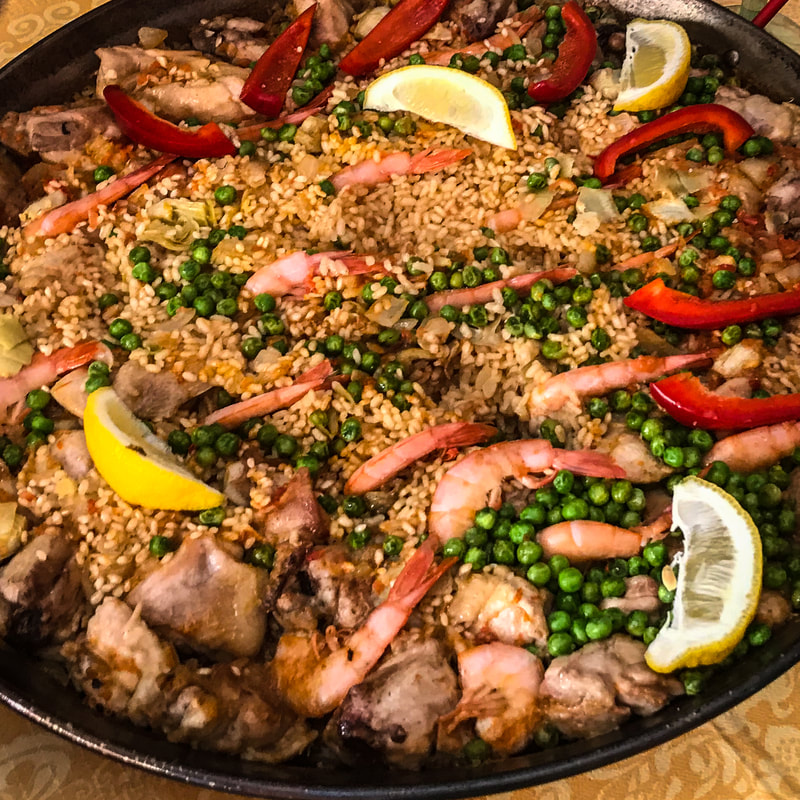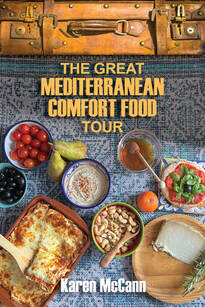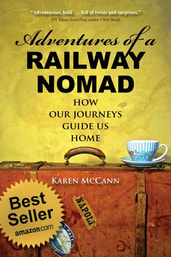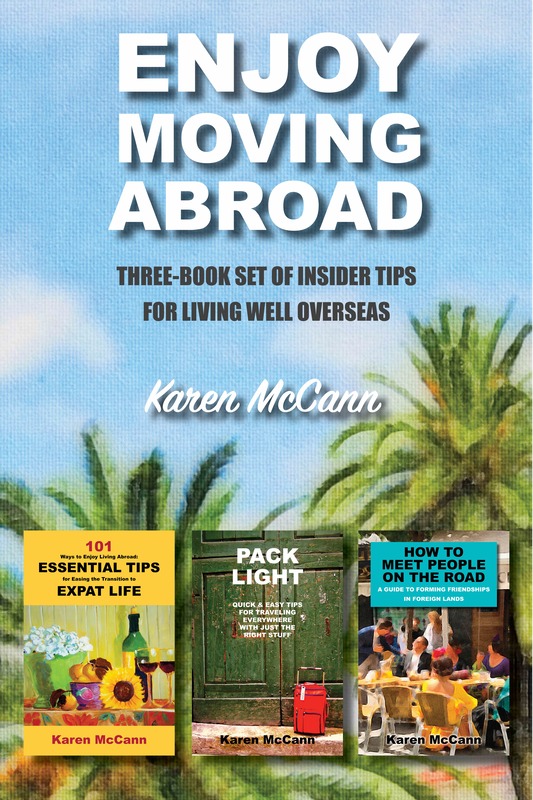|
“Everybody complains about the weather, but nobody does anything about it.” Charles Dudley Warner (often misattributed to his friend, Mark Twain) Seville made worldwide headlines this week by announcing our city officials will be the first to name and categorize heat waves. Of course, I realize those of you who are reading this huddled in heavy sweaters by the fireplace with sleet lashing the window may have difficulty mustering much weather sympathy for southern Spain. But 100,000 people die of heat in Europe every summer, and Seville, the warmest city in continental Europe, has declared they’re hot as hell and they’re not going to take it anymore. Starting in 2022, officials will rank the severity of extreme heat waves and assign them names, like hurricanes and tropical storms. Naturally we’re all agog to learn what they’ll be called. Naming weather patterns goes back to ancient times when everyone tried to figure out what god to appease or saint to invoke. In the 19th century, a British meteorologist in Australia, Clement Wragge, kicked off modern storm naming by calling particularly nasty cyclones after government officials he disliked. Will our mayor do the same? Maybe the mayor will choose women’s names, in the tradition launched by the US Air Force Hurricane Office in Miami back in the 1940s. I suspect those guys were settling a few scores of their own, although they claimed they just wanted to avoid confusion with the military’s masculine Alpha Bravo Charlie phonetic alphabet. By the 1970s, political pressure persuaded everyone to agree to divide the names equally between male and female. Unfortunately the response is far from equal. “Researchers find that female-named hurricanes kill about twice as many people as similar male-named hurricanes because some people underestimate them,” reported The NY Times. “Americans expect male hurricanes to be violent and deadly, but they mistake female hurricanes as dainty or wimpish and don’t take adequate precautions.” Obviously they’re picking the wrong female names. Calling storms after the power-mad women in Game of Thrones or the wickeder Disney villainesses could add some much-needed badass to the warnings that monikers like Wendy or Sally just don’t convey. Just how scary might Heat Wave Cruella be? Andalucía (as southern Spain is called) is subject to intense zones of high pressure known as “heat domes.” August’s heat dome caused temperatures in the town of Montoro, 110 miles east of here, to reach 117.3 F (47.38 C) — a national record. Experts say that kind of heat can make you weak and sick, drive you crazy, spark violence, and lead to an early grave, especially if you’re under the age of four or over sixty-five. Yikes! Of course, scorching summers are nothing new in Andalucía. In the olden days, people protected themselves by giving their houses three-foot-thick walls, high ceilings, and tile floors. On seriously sweltering nights, families would bring bedding down to the riverbank for the marginally cooler air; if they still couldn’t sleep, they’d while away wakeful hours chatting with neighbors. Nowadays most people have air conditioning, and everyone has fans, but folks still seek water to cool down. In summer, people siesta during the afternoon heat and emerge at dark, ready to eat, drink, and make merry. The city comes alive at night with outdoor concerts and movies, bars that stay open until dawn, and playgrounds full of children. Friends from the US protest, aghast, at seeing little kids on swings at midnight, but hey, they need to exercise at hours when they won't risk heatstroke. I like early morning strolls, often through María Luisa Park. Friends and I stopped for coffee there one long ago summer, the year café owners began installing water sprayers on the underside of awnings to cool overheated customers with a gentle mist. It was a crisp morning but the staff couldn’t resist showing off their new toy, and suddenly freezing water was raining down on our heads. They seemed stunned by our cries to turn the thing off before hypothermia set in. Two hours later we'd have loved an impromptu shower in the rising heat. At the time, not so much. Hydration is, of course, essential in hot weather but at times this might prove trickier than you’d imagine. Some tavern keepers have a natural reluctance to give anything away for free, so if you ask for agua del grifo (tap water) it may take ages and multiple requests before it materializes. You may be told the city water is undrinkable and they’re legally required to sell you bottled water as a matter of public safety. Utter hogwash! Everyone drinks city water. I consulted an expat physician friend who has researched the subject, and he confirmed there is nothing whatsoever wrong with Seville’s agua del grifo. I’ve been known to walk out of restaurants over this issue, because I’m opposed both to single-use plastics and to being conned. But I often find it simpler to order a small beer (una cerveza) or more specifically the beer on tap (una caña), which is usually about 8 ounces of liquid costing 1.20€ ($1.40). This will arrive instantaneously, icy cold, and (according to a study at Spain’s University of Granada ) more rehydrating than water. Apparently the undergrads in the study downed a brewski after working out in triple digit temperatures and found it more refreshing than H2O. The surprising part? Medical testing backed them up. Obviously more research is needed; I doubt they’ll have any difficulty getting volunteers. Fun fact: After I order a small beer, servers are usually quite willing to bring me tap water. I can only assume they’ve read the Granada study and want to make sure I have a viable rehydration protocol. Will Seville city officials soon rate the severity of our heat waves by the number of cervezas it will take to stay hydrated? I can imagine future meteorologist around the world saying things like “Yep, this Cersei Lannister heat dome is a real ripsnorter, folks, at least 15 cañas!” The UN warns temperatures will keep rising, but I can lay to rest any concerns that Seville is literally hot as Hell. The Book of Revelations 21:8 refers to “a fiery lake of burning sulfur,” so scientists researched the burning point of sulfur and announced Hell’s temperature is 444.6 C (832.3 F). I’m pretty sure Seville isn’t hitting that high any time soon. Whew! In the nineteenth century, Charles Dudley Warner’s joke about nobody doing anything about the weather always raised a chuckle. Today that chuckle has a dark edge to it. We realize that we are collectively doing a lot that affects the weather — unfortunately, mostly making it worse. Seville officials will start naming and ranking heat waves to call attention to the dangers of our ever-hotter habitat in hopes we'll adapt appropriately. I am confident Sevillanos will find a way. I’ve discovered they’re as resilient and resourceful as the desert dwellers in the movie Dune. No doubt they’ll teach me plenty of useful survival tips, and yes, of course, I’ll pass them right along to you.
20 Comments
I was startled to learn, when I first arrived in Seville years ago, that I was expected to kiss just about everybody on both cheeks. My landlady kissed me each time she collected the rent, my banker kissed me after we opened our account, and the flamenco singers in the dubious bar across the street kissed me whenever I dropped in to listen to the music. After a few awkward fumbles, I learned it was always your right cheek to their right cheek, then you do the left cheeks, and that's it. You never kiss once (American-style) or three times (as in Egypt, Russia, Switzerland, Belgium, and parts of France), or do four or more, because honestly, who has the time? It’s tough enough to greet everybody you know with dos besos (two kisses) when you meet up at a chaotic bar or crowded party. If you miss anybody, it’s viewed as a hurtful slight that requires a lengthy and sincere apology, if not outright groveling. In ordinary times, you’re wise to kiss first and take names later. Nowadays, of course, Spain’s dos besos tradition has been suspended for the duration. Most of my friends, both local and international, bump elbows and make jokes to get through the slight awkwardness we all feel at the change in ritual. Some die-hard Spanish pals simply dive in for the two kisses anyway; being fully vaxxed in a region with one of the world’s highest vaccination rates, I’m not too worried about this. But in general, I feel it's sensible that people are (mostly) holding off on closer physical contact for now. Don’t worry, even without constant rounds of besos, our lips are keeping plenty busy. “I’ve never sold so much wine,” confided my friend Carlos, who runs the cozy bodega Botellas y Latas. “When people stay home, my orders go up and up.” After a summer of providing comfort to those under Covid curfews, Seville's wine merchants began shifting into high gear to slake the thirst of a population celebrating the freedom from fear that comes with mass inoculation and herd immunity. Everyone wants to gather in the bars, restaurants, and streets to raise a glass together. Having recently returned from California, where wine drinking is taken very seriously indeed, I needed some time to readjust to Seville’s casual attitude toward vino. Bartenders will ask if you want white (blanco) or red (tinto). Don’t worry if you get flustered and ask for rojo (red) as they’ll still get your drift, but tinto is the correct term. They’ll then ask if you want seco (dry) or dulce (sweet) or sometimes afrutado (fruity). And this is where I run into trouble. What I actually like is a full-bodied, buttery white with a complex flavor and a long finish. I have embarrassed myself and numerous waiters attempting to obtain something — anything — along these lines in Seville. They always listen politely until I run out of words, and then they say, making a massive effort to appease the mad foreigner, “Así que … semi-seco?” (So … somewhat dry?) I have learned through diligent trial and error to specify Rueda verdejo (Roo-AY-dah vare-DAY-ho). Verdejo is a full-bodied grape that originated in North Africa and arrived in Spain’s Rueda region in the 11th century, where it was developed into a dense, sherry-like wine. Then in the 1970s some brilliant, public-spirited winemakers from Rueda and France teamed up to create the fresher verdejo we know today. Whew! I can now order a drinkable blanco wherever I go. The amount I don’t know about Spanish wines remains considerable. So the other day, when Rich and I happened upon DNS Gourmet, a wineshop with a tasting table, it occurred to us that maybe we should gather a few friends and learn more. María agreed to organize a private tasting with four wines accompanied by cheese and other nibbles she sold in the shop. We confirmed some friends were available and set a date for last Wednesday. The evening was tremendous fun, although to be honest, I can't recall much of what I learned about Spanish wines. I’d forgotten that the subject has two levels: the simplistic Q&A you get from waiters, and the deluge of information you receive from real experts. And María was an expert; she’d actually crushed grapes with her bare feet, as people have done for 10,000 years, and showed us a video of herself churning great vats of fermenting grapes with what appeared to be a giant wooden spoon. She’d spent years studying the science of viticulture and art of winemaking. She absolutely knew her stuff. María explained that during fermentation, yeast converts the grape’s natural sugar into alcohol; the more sugar the higher the alcoholic content. She then served us a young white called Cuestablanca, made from the Pedro Ximénez grape, usually found in dense, sweet sherries, yet somehow resulting in this dry wine. The second white, a Rueda verdejo called José Pariente, was more to my liking. She said it was good with chocolate, but then, isn’t everything? Glass by glass, my notes got increasingly sketchy. After Hado, a lovely red from the Rioja region, she brought out one final tinto and the real show-stopper: Pago de los Capellanes from Ribera del Duero. One of my friends, new to Seville and only now discovering the wines, took one sip and got that rapturous look on her face that always makes me think of Romeo’s famous line, “Did my heart love till now?” This is one of the few reds I know well, and it always earns that reaction. By this point in the evening, my notes were worthless, illegible scrawls. But I can pass on some valuable wisdom: Spain has 138 wine regions but if you stick to the three Rs — Rueda, Rioja, and Ribera del Duero — it’s hard to go too far wrong. In the Before Times, we’d have kissed María before departing, but now we just thanked her warmly and took off, carrying the leftover wine with us for future study. It’s in situations like these that I really miss the dos besos and their way of transforming a business relationship into something close to kinship. Kissing, like wine, is designed to smooth the sharper edges of life. It lets us relax and feel connected. Of course, you can’t run around doing it just anywhere. Long before Covid, I found that my fellow Californians tend to look at me very oddly indeed if I kiss them the first time we meet. And that goes double in the UK. Which is why I love the story of Winston Churchill preparing for an especially tricky meeting with French President Charles de Gaulle in 1942. A diplomatic advisor urged the Prime Minister to treat de Gaulle with kid gloves, adding, “He will probably expect to kiss you on both cheeks.” To which Churchill replied, “All right, all right. I’ll be good. I’ll be sweet. I‘ll kiss him on both cheeks — or all four if you’d prefer it.” Luckily for all of us, the idea of kissing on all four cheeks has never really caught on. The dos besos tradition, however, is firmly entrenched in the Spanish psyche and will, I hope, become commonplace again soon. I can hardly wait. This post was written in response to a reader who said she's heading back to Spain soon and was worried about the kissing custom in these Covid times. I explained to her that most people avoid the customary dos besos. If anyone doesn't, she can always throw an elbow in their direction. I've been back in Seville a month now, and every day I learn more about how the pandemic has reshaped the landscape and re-defined life in this sociable, foodie city. CLICK HERE TO RECEIVE FREE UPDATES on Seville, travel to Europe, and where to find good eats and survival comforts. YOU MIGHT ALSO ENJOY
The idea that “breakfast is the most important meal of the day” was invented by 19th century cereal manufacturers, most probably John Harvey Kellogg, a religious zealot who believed eating breakfast cereal would make Americans strong enough to stop thinking about sex. (It didn’t. Go figure.) The Spanish, who have no such Puritan goals, enjoy their version of breakfast so much they indulge in it twice every morning, with great enthusiasm. At home, Sevillanos typically start the day with a first desayuno of coffee and toast topped with olive oil and ham or butter and jam. They then head to their workplace and put in an hour or two of labor, after which they’ll refresh themselves with a midmorning break at a nearby café, enjoying another round of coffee and toast to fortify themselves until lunch. To accommodate the second-breakfast habit, the city has café-bars on practically every block. Some are grand, an increasing number are corporate efforts, and the hipsters outdo one another in providing quirky environments, flat whites, and wifi workspaces. But the mainstay continues to be modest little neighborhood places you wouldn’t look at twice in the US. To American eyes, inexpensive furnishings suggest substandard coffee and cheap food, but that’s not the case in Seville. The other morning we tried the Bar Algabeño, tucked between the Feria Market and the 15th century palace of the Guzmanes of La Algaba (now municipal offices and a museum). We found the Algabeño’s coffee and toast delicious, and the back alley location (which in the US would be another red flag) makes it a great place to watch locals going about their day. The Catunambu, on the bustling shopping street Calle Sierpes, couldn't be more visible, yet many Americans bypass it for the nearby Starbucks. So you’ll mostly find Spaniards at the Catunambu, taking a leisurely second breakfast to restore themselves after the rigors of a shopping spree. In the photo below, the individual in the big orange hat is almost certainly a foreigner, as local women never wear hats in town unless dressed to the nines for a fancy wedding, and Sevillano guys, if they wear hats at all, stick to Panamas. So what’s everybody ordering for their second breakfast? The choices may be simple, but to get it right requires a fair amount of vocabulary. In Seville, you always order your drink first. The classic is café con leche, half espresso and half steamed milk. Too much milk? Try a cortado, a shot of espresso with half as much milk. Need even more of an eye-opener? Ask for a café solo, a straight shot of espresso. Prefer something lower octane? Café Americano is plain black coffee, and leche manchada (literally “stained milk”) is half an inch of espresso and plenty of milk. I’ve never seen low-fat milk here, but hipster and tourist coffee houses may offer milk alternatives. However, no one will understand a request for “leche de soya” (soy milk), “leche de avena” (oat milk), or the like because everyone knows milk is produced by lactating mammals, not plants. The barrista will be dumfounded by your ignorance but too polite to say so. Ask for bebida de soya (soy drink) or bebida de avena (oat drink) instead. It’s even more complicated if, like me, you happen to like tea with milk, which is unheard of here. Ask for té con leche (tea with milk) and you’ll be served a glass of steamed milk with a tea bag in it. If you ask for té con leche aparte (tea with milk apart or on the side) they’ll bring you tea but not the milk, assuming you’ll drink that later in the meal or want it left in the kitchen for esoteric reasons known only to mad foreigners. Té con leche aparte para añadir (tea with milk apart to add in) should do the trick, although you may have to repeat it several times to be understood. You can see why I gave up and switched to café con leche. As for food, toast is such a given you don’t even have to say tostada; you simply order a media (half a small baguette) or entera (entire baguette) and name your toppings. The most common are jamón (thin slivers of Spanish ham), tomate (tomato) which can be ordered with or without the ham, and mantequilla y mermelada (butter and jam). If you want heartier or more familiar fare, such as eggs, avocado toast, or corn flakes, you may find them in places that cater to out-of-town visitors, but you won’t see a lot of Sevillanos eating them. I once made pancakes for a Spanish house party, and they all looked aghast, took one courtesy bite, and went back to their tostadas with sighs of relief. Some years ago, when I did a post about Spanish breakfasts, my long-time reader Vera wrote in to ask why I didn’t mention churros and chocolate, and I had to agree this was a serious oversight on my part. To my brother Mike, a devout chocaholic, this is undeniably Seville's breakfast of champions. You start with churros — sizzling fried tubes of dough — which you proceed to dunk in hot chocolate as dense as pudding. I know, right? Possibly the most decadent breakfast ever invented and naturally a huge favorite with the Sevillanos. It’s mostly a Sunday indulgence but is occasional used to reanimarse (reanimate yourself) en route home from a party at six in the morning or eaten as your marienda, the post-siesta snack that’s essentially a third breakfast. “Rich,” I said, “we have to go out for churros and chocolate. It’s research.” “I am willing to make the sacrifice,” he said. “For your readers.” The article 5 Places for the Best Churros in Seville named El Pilar numero uno, and as this is a favorite of ours, Rich and I headed there directly. Unfortunately we arrived during the second breakfast rush, and every outdoor seat was taken. As we hovered uncertainly on the outer edges of the small crowd, an older gentleman rose slowly to his feet and said, “Please, take my table. I insist.” He picked up his half-finished coffee and headed indoors, our fulsome thanks ringing in his ears. The churros and chocolate were first rate: hot, dense, and fortifying to the physique. The bill came to 5.60€ ($6.47), and when Rich handed the waitress a 5 euro bill and a euro’s worth of change, she counted the money and exclaimed, “Sir, you have overpaid me!” And tried to give back the 40 centimos. You have to love a place with that kind of attitude. For Sevillanos and others who love the city, desayuno is one of life’s great treats and once a day simply isn't enough. Most of us have a regular café where we no longer have to order our second breakfast; the camarero automatically places our favorite configuration of coffee and toast on the bar, perhaps nudging a bottle of olive oil in our direction so we can drench our toast even further. I can only imagine how John Harvey Kellogg is turning in his grave at the very idea of all that pleasure packed into a morning meal. But hey, it works for me. YOU MIGHT ALSO ENJOY
As I resettle in Seville, my favorite city on the planet, I'll keep you posted on how the pandemic has reshaped the landscape. But don't worry: not even Covid could dampen the city's appetite for good food. CLICK HERE TO RECEIVE FREE UPDATES on Seville, travel to Europe, and where to find good eats and survival comforts. Coming home after a long absence is like Christmas. I run around for days exclaiming over clothes and crockery and books that seem to have come into my possession by magic. When did I buy red boots? What’s this yellow bowl doing in my cupboard? Have I read this Agatha Christie? But this time, what really stopped me in my tracks was a near-empty glass jar labeled “whole wheat flour.” Suddenly I was back in the early days of pandemic lockdown, baking constantly so Rich wouldn’t risk his life running out for fresh bread, watching my supply of whole wheat flour dwindle as shortages set in throughout Seville. Looking at that jar, I was swept with a powerful feeling of gratitude that those times were in the rear view mirror. Every morning for a week I gazed at that jar, thanking my lucky stars and the research scientists who developed the Covid vaccines. And on the eighth day, I tossed away that handful of old flour, collected my husband, and went out to lunch. One of my happiest recent discoveries was that Seville has not lost its appetite for good eats in convivial social settings. Modest café-bars still offer a solid bedrock of classic fare, often prepared by someone’s abuela (grandmother) using her abuela’s recipes for such classics as solomillo al whiskey (pork loin in whiskey sauce), colo de toro (stewed bull’s tail), and carrilladas (pig cheeks). When I first arrived in Seville, I was a vegetarian, and somehow I survived for a couple of years on espinacas con garbonzos (spinach with chickpeas) and pisto (vegetable stew). Then I came to my senses, decided my plant-based diet was more of a guideline than a rule, and devoted myself to enjoying everything on the menu. Around eight years ago, innovations began sneaking in: sprigs of fresh herbs beside the solomillo, a bed of arugula under the pig cheeks, chopped chives in the tortilla de España (potato omelet). I worried that the abuelas’ abuelas were spinning in their graves. Pretty soon the old tile-walled café-bars were rubbing shoulders with sleek new restaurants offering wildly innovative menus and amusing napkins, often with presentations involving smoke-filled domes or shrimp shavings that appeared to be fluttering in the bowl. Arriving in Seville again after 16 months away (months in which the entire world reconfigured itself) I braced myself for unwelcome changes in the city’s taverns, cafes and restaurants. Being selflessly devoted to keeping my readers informed, I decided it was my duty to check out as many as possible right away. Yes, a few had closed and will be missed, but I was overjoyed to discover how many old-school eateries survived the recent upheavals. Bodeguita Romero (Calle Harinas, 10) is still serving their signature carrilladas, which Sevillano friends Isabel and Julio introduced me to years ago as the best slow-cooked pig cheeks in the city. Los Coloniales (Plaza Cristos de Burgos, 19) is still dishing up generous portions of solomillo al whiskey smothered in garlic and drenched with whiskey and olive oil. And Casa Morales (Calle García de Vinuesa, 11) is still full of visitors squealing at the sight of gulas, fake baby eels made of pressed fish (like “krab” in the US), a popular replacement for anguilas (real baby eels), a delicacy that’s become prohibitively expensive. I wasn’t surprised that local customers would keep the traditional eateries alive, but what about the trendy new places, with higher prices and more exotic menus, which cater largely to foreign visitors? You’ll be happy to know that most of my favorites are still around, including Contenedor (Calle San Louis, 50), the restaurant whose roast pork convinced me to become a carnivore again. It’s known for its slow cooking, relaxed atmosphere (they don’t allow bachelor parties or other rowdy groups), and some of the best food anywhere. I was longing to dine there again, but it’s always been strictly indoor seating, which I’m still avoiding. I could hardly contain my joy when friends told me Contenedor has added a handful of sidewalk tables. Like many cities, Seville is allowing restaurants to set up outdoor dining wherever they can squeeze in a tabletop, and to build parklets in the street despite the chronic shortfall of parking spaces. Another of my go-to hotspots, Castizo (Calle Zaragoza, 6), has added two tiny tables by the front door, and we were lucky enough to get one of them for a recent lunch with a friend visiting from San Francisco. “The food in this town is extraordinary,” John exclaimed. “I’ve never tasted anything like it.” Now, I often get remarks like that when I pass around a plate of gulas, but this was different; he made it clear he considered Seville’s cuisine a hot rival to anything back home. We ate plenty of jamón (Spanish ham) while John was in town, and he wanted to take some along when he left. With some difficulty, Rich and I managed to persuade him it was impractical to smuggle a whole pig leg onboard an airplane, even in checked luggage. He decided instead on a vacuum pack of freshly sliced jamón, which is how practical locals tend to transport it. An American restauranteur once told me he used to import his jamón vacuum packed and hidden in the pages of a magazine, so officials didn’t see it and airport dogs couldn’t sniff it out; I have never personally put this to the test. I took John to the market in Plaza Encarnacíon beneath the Setas (a hideous, mushroom-shaped monument to the egos of civic leaders) to buy some jamón Ibérico (the good stuff). Slicing jamón cannot be rushed; it is an art form requiring graceful cuts resulting in paper-thin slivers that melt in your mouth. I was glad to see this was another local food tradition that hadn’t changed one iota. Jamón is the ultimate comfort food for many Spaniards and quite sustaining. A few slices on your breakfast toast can keep you going all day, if need be. A Spanish friend explained to me that one of the reasons meat features so prominently on local menus is that everyone here was raised on stories of the post-Civil War era called The Hunger, when nobody had enough to eat, especially here in Andalucía, the poorest part of Spain and one which stood against Franco. “At home you eat vegetables,” she said. “When you go out, you want something special.” Sevillanos are experts at making do with less; with nothing on hand but a few tomatoes and vegetable scraps, they created the cold soup known as gazpacho. In a place that has known real hunger, every meal is cause for celebration, whether we’re feasting on roast pork or eating bread made with the last whole wheat flour we’ll see for months. Food is about comfort, nourishment, and pleasure, a time to lay down our responsibilities, our worries, and our phones so we can appreciate the gift of this small, perfect moment while it’s right in front of us. YOU MIGHT ALSO ENJOY
As I resettle in Seville, my favorite city on the planet, I'll keep you posted on how the pandemic has reshaped the landscape. But don't worry: not even the pandemic could dampen the city's appetite for good food. CLICK HERE TO RECEIVE FREE UPDATES on Seville, travel to Europe, and where to find good eats and survival comforts. FEEL FREE TO SHARE this article with family, friends, and anyone considering visiting Spain during these crazy times. https://www.enjoylivingabroad.com/my-blog/where-to-find-sevilles-best-tapas-today |
This blog is a promotion-free zone.
As my regular readers know, I never get free or discounted goods or services for mentioning anything on this blog (or anywhere else). I only write about things I find interesting and/or useful. I'm an American travel writer living in California and Seville, Spain. I travel the world seeking eccentric people, quirky places, and outrageously delicious food so I can have the fun of writing about them here.
My current project is OUT TO LUNCH IN SAN FRANCISCO. Don't miss out! SIGN UP HERE to be notified when I publish new posts. Planning a trip?
Use the search box below to find out about other places I've written about. Winner of the 2023 Firebird Book Award for Travel
#1 Amazon Bestseller in Tourist Destinations, Travel Tips, Gastronomy Essays, and Senior Travel
BLOG ARCHIVES
July 2024
CATEGORIES
All
|
